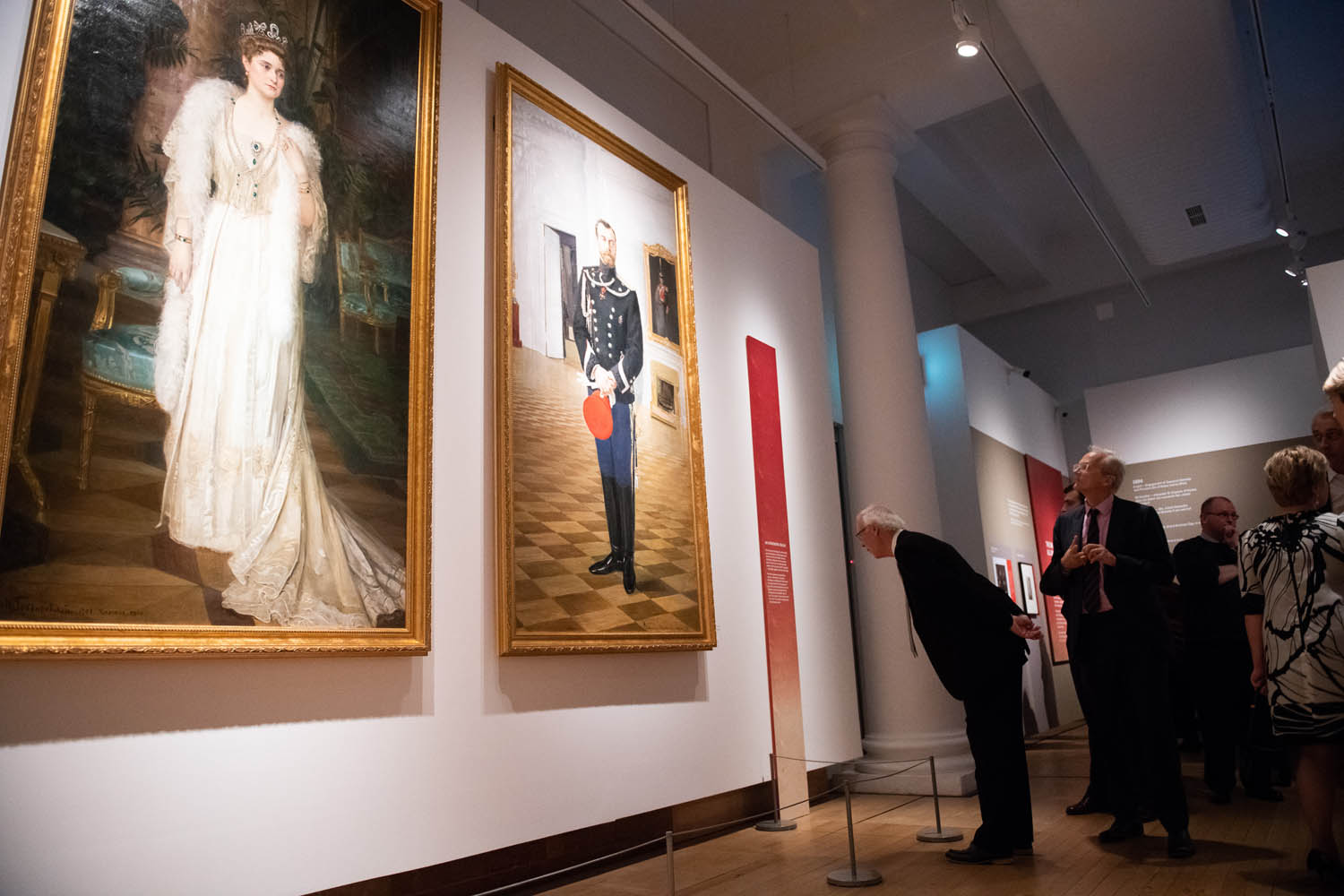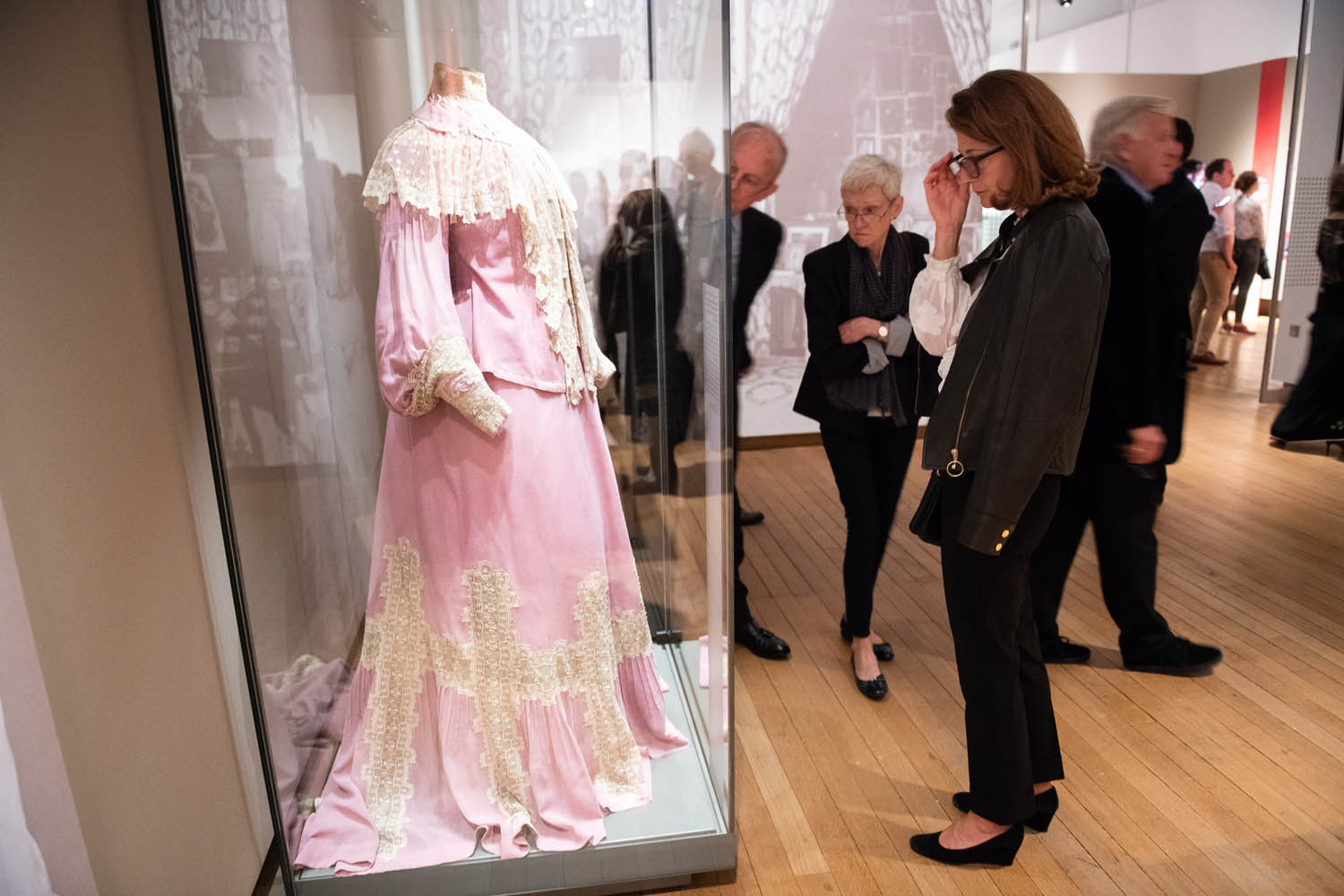A century after Romanov rule of the largest country in the world came to a bloody end, the Science Museum has launched an exhibition re-examining the fates of Tsar Nicholas II and the Russian imperial family through the prisms of science and medicine.
Featuring rare artefacts never seen on public display in the UK, The Last Tsar: Blood and Revolution shows how the genetic profiling expertise of British forensic experts helped solve one of the greatest mysteries of the 20th century, concerning the fate of the imperial family.
 Ian Blatchford, Director of the Science Museum, explained how the roots of the exhibition lie in Cosmonauts, the first international exhibition about how Russia won the original space race.
Ian Blatchford, Director of the Science Museum, explained how the roots of the exhibition lie in Cosmonauts, the first international exhibition about how Russia won the original space race.
During her research in the collections for the Science Museum exhibition, curator Dr Natalia Sidlina found 22 albums of images taken by English tutor Herbert Galloway Stewart, employed by the Grand Duchess Xenia, which provided an unprecedented glimpse of court life.
‘I vowed they would have their moment,’ Blatchford said. Now they can be seen for the first time in the exhibition, curated by Dr Sidlina with Sasha Smirnova and Lottie Dodwell.
A central theme is the treatment of the Tsar and Tsarina’s only son and heir Alexei, who had the life-threatening condition and ‘royal disease’ haemophilia B, passed down from Queen Victoria.
 The family’s determination to keep Alexei’s illness a secret compelled them to take controversial measures that ultimately contributed to the fall of the 300-year-old dynasty. ‘A central story is medicine and the great tragedy of Tsarevich Alexei’s haemophilia B,’ said Blatchford.
The family’s determination to keep Alexei’s illness a secret compelled them to take controversial measures that ultimately contributed to the fall of the 300-year-old dynasty. ‘A central story is medicine and the great tragedy of Tsarevich Alexei’s haemophilia B,’ said Blatchford.
The Tsarevich endured a range of treatments from medical practitioners of the day, along with self-proclaimed holy man Grigori Rasputin. Blatchford remarked ‘some of the progressive treatments were much crueller than religious ones.’
The exhibition shows rare artefacts, including one of the Tsarina’s maternity outfits, the family’s personal diaries, including one that shows the last entry of the Tsarina, the Imperial family’s extraordinary travelling medicine chest (‘you can have an entire exhibition on that one object alone’, commented Blatchford), and a damaged emerald cross and Mother of God icon, found at the scene of their murder.
 There are also two Imperial Fabergé Easter Eggs. ‘The Moscow Kremlin Museums have lent us the last Fabergé Egg presented by the Tsar to his wife: the Steel Easter Egg of 1916,’ said Blatchford. ‘A very bold and shocking military design, and with its miniature painting of father and son consulting maps at army headquarters.’
There are also two Imperial Fabergé Easter Eggs. ‘The Moscow Kremlin Museums have lent us the last Fabergé Egg presented by the Tsar to his wife: the Steel Easter Egg of 1916,’ said Blatchford. ‘A very bold and shocking military design, and with its miniature painting of father and son consulting maps at army headquarters.’
The investigation into the disappearance of Tsar Nicholas II, his family and entourage following the revolutions of 1917, started in July 1918 and the case remains open today.
One hundred years later, this exhibition will take visitors behind the scenes to uncover the science behind the investigation into one of the greatest mysteries of the 20th century.
 This investigation was one of the first occasions that forensic DNA analysis was used to solve a historic case, under the direction of Dr Peter Gill from the Forensic Science Service, who is now a professor at the University of Oslo.
This investigation was one of the first occasions that forensic DNA analysis was used to solve a historic case, under the direction of Dr Peter Gill from the Forensic Science Service, who is now a professor at the University of Oslo.
At the launch Dr Gill described how remains were found in a shallow grave near Ekaterinberg in 1991 and among them they believed there were the remains of the last Tsar, Tsarina, and three of their five children.
Dr Gill was presented with samples from nine groups of bones in a plastic bag by Dr Pavel Ivanov of the forensic institute in Moscow, so that advanced forensic profiling techniques could be used, as the UK led the way in DNA fingerprinting and profiling at the time.
He put them in his attic for safe keeping and the next day began DNA analysis in Aldermaston, near Reading.

His team had no idea if degraded DNA of this age could be analysed. ‘Nothing this age had been attempted before,’ he said.
They were able to extract two kinds of DNA: nuclear DNA, which is the genetic recipe of the body, half inherited from each parent; and mitochondrial DNA, from the power packs of cells, which is only inherited from the mother.
They could tell that a family group was present, he said. A complete match was obtained between the samples from the remains of the alleged Tsarina and three children, and a blood sample from HRH Prince Philip, a direct maternal descendant of the Tsarina’s sister.
Samples from two maternal relatives on the Tsar’s side also had near-identical mitochondrial DNA (Dr Gill described how they found evidence of heteroplasmy, a rare condition which leads to two types).
 The results were challenged by some who suggested there was contamination but follow up studies by other groups confirmed the findings, said Dr Gill.
The results were challenged by some who suggested there was contamination but follow up studies by other groups confirmed the findings, said Dr Gill.
The case gave his team considerable experience of handling degraded DNA, and the methods paved the way for the first national DNA database. ‘The case was important in itself,’ he said, ‘but also important for the development of forensic science and new techniques to solve crime.’
Two children were missing from the original mass grave but a second was found 70 metres away in the summer of 2007. Analysis revealed the remains of a missing Grand Duchess and Tsarevich Alexei. Another study revealed haemophilia B, a genetic disorder caused by missing or defective clotting protein, factor IX, as a result of a mutation, a change in a gene.

Last night a launch party was hosted in the museum by Dame Mary Archer, Chair of the Board of the Science Museum Group: ‘The last Romanovs have long enthralled us, but there have been many exhibitions about them – can there really be more to say? Yes,’ said Dame Mary.
‘None of this would have been possible without three vital ingredients. The first is fine scholarship and all praise to the curator powerhouse of Dr Natalia Sidlina, Sasha Smirnova and Lottie Dodwell. And they were supported by the wise counsel of our expert panel: Liz Carroll, Professor Peter Gill, Professor Donald Rayfield, Dr Andrea Rose, and Professor Peter Waldron; and also a special thanks to Professor Robert Service for his advice at the inception of this project.’
She added: ‘We are honoured that important colleagues have travelled from Russia and the USA especially, and so a warm welcome to the Directors of the Moscow Kremlin Museums, The Tsarskoe Selo museum, State Museum of History of St Petersburg, Russian Medical Museum and Russian History Foundation Jordanville.’
 The exhibition is sponsored by Russian Railways, one of the world’s largest rail companies, represented by Mr Vadim Mikhailov, First Deputy, Chief Executive Office, who told the launch how Tsar Nicholas II oversaw a railway expansion ‘of dramatic scope and remarkable daring and ambition.’
The exhibition is sponsored by Russian Railways, one of the world’s largest rail companies, represented by Mr Vadim Mikhailov, First Deputy, Chief Executive Office, who told the launch how Tsar Nicholas II oversaw a railway expansion ‘of dramatic scope and remarkable daring and ambition.’
‘In Russia, the first railroad—Tsarskoselskaya—appeared in 1837, and its first steam locomotive was provided by the Stephenson plant here in England. It was called the Provorny, or Agile. But it was under the last Tsar that rail underwent significant development.
‘We at Russian Railways are very pleased to be able to support this exhibition, and care deeply about the preservation of our shared culture and history. And we would like to congratulate the museum curators and staff on the event they have skilfully created.’

The media partner of The Last Tsar is The Telegraph. Two Telegraph stories about the original forensic work by Dr Gill, written by me, feature at the end of the exhibition. Gill told the launch how he remembered well how it was ‘a big story’.
Among the other guests were the Duke of Kent; Elena Gagarina, Director of the Moscow Kremlin Museums; Liz Carroll, Chief Executive of The Haemophilia Society; Alexander Kalyakin, Director of The State Museum of the History of St Petersburg; Tatian Chirkina, Director of the N A Semashko National Institute of Public Health; Vadim Mikhailov, First Deputy Chief Executive Office of JSC Russian Railways; Michael Perekrestov, Director of Russian History Foundation, Jordanville; Mark Poltimore, Chairman of Sotheby’s Russia; Helen Rappaport, Author; and Olga Taratynova, Director of The Tsarskoe Selo State Museum and Heritage Site.
This blog was written alongside our free exhibition The Last Tsar: Blood and Revolution, exploring the life and death of Tsar Nicholas II and his family and the forensic investigation into their murder. Discover more about the science behind one of the greatest mysteries of the 20th century in this series of blog posts.